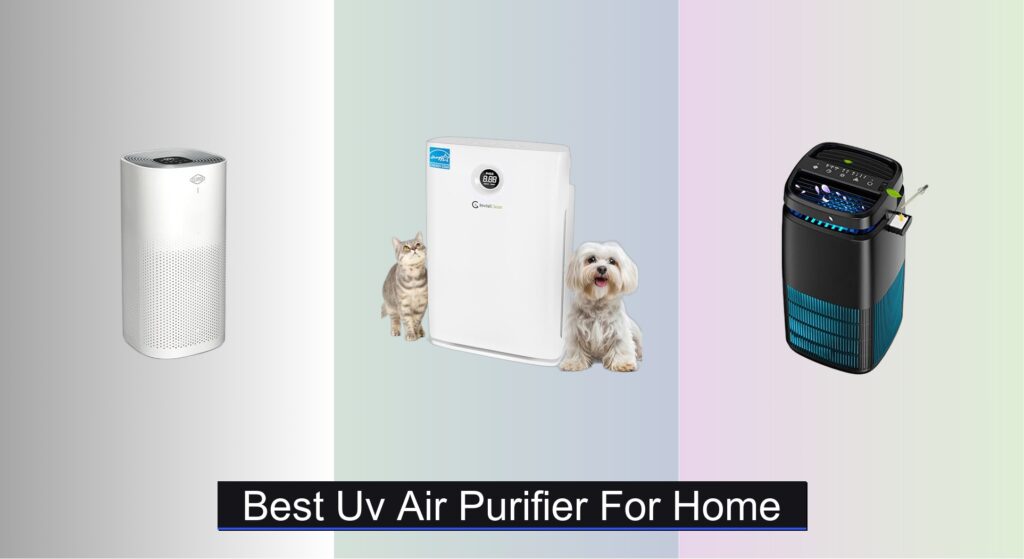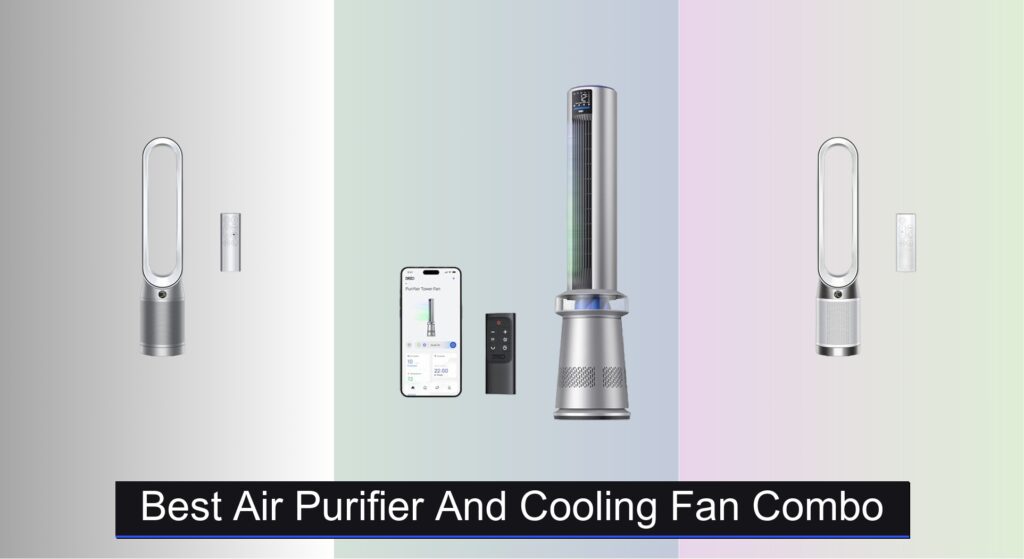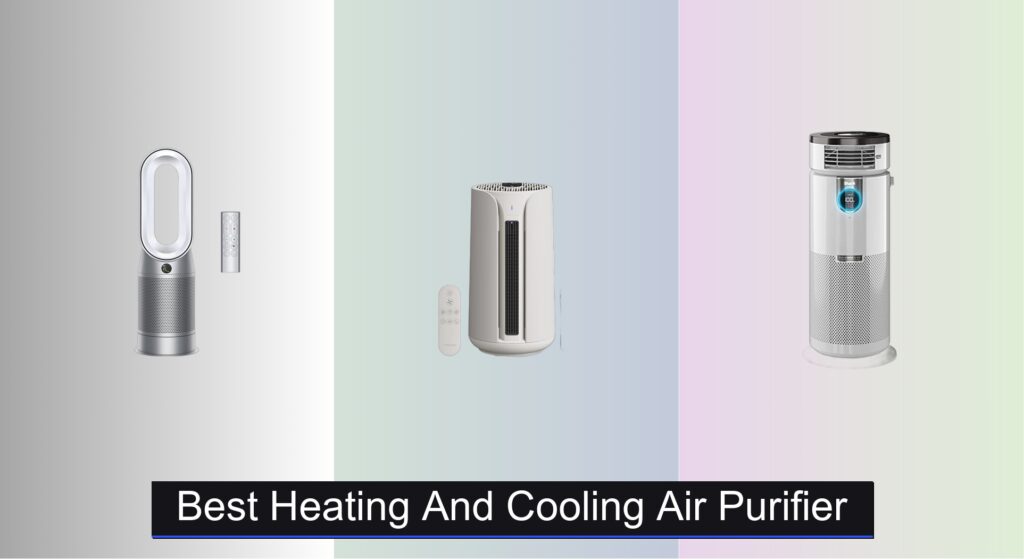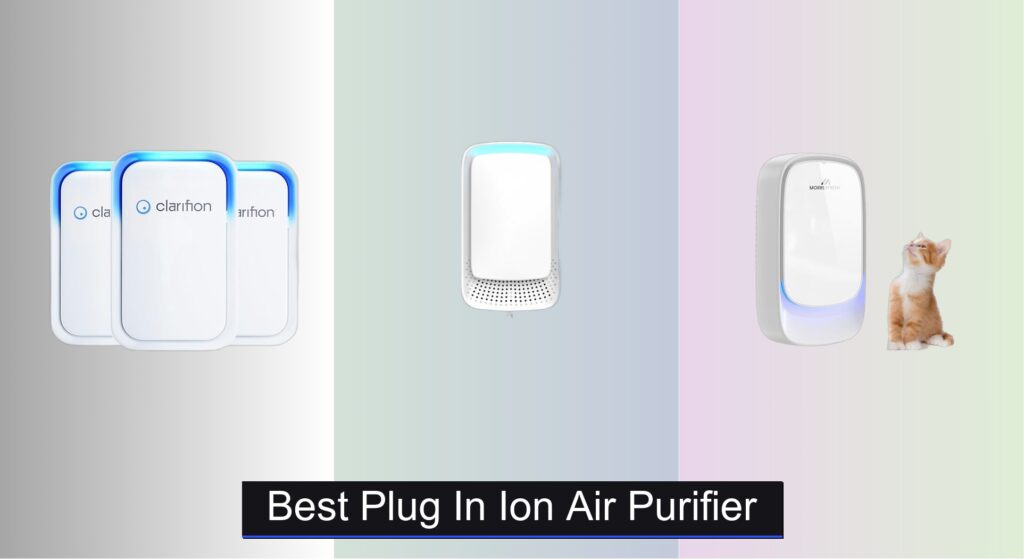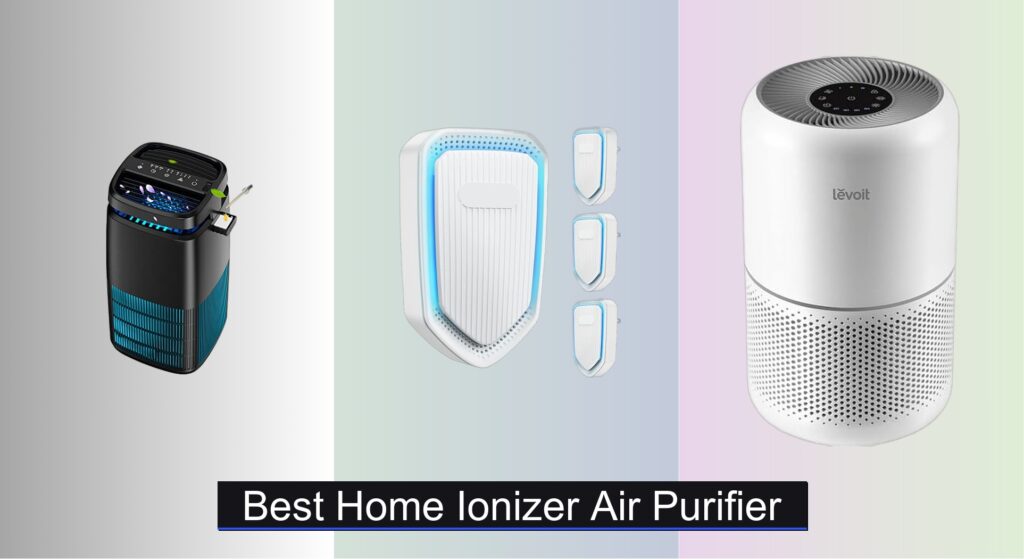Indoor air pollution is a silent concern, with allergens, viruses, bacteria, and volatile organic compounds (VOCs) circulating in homes every day. For those seeking cleaner, healthier air—especially during allergy season or flu outbreaks—a standard air purifier may not be enough. This is where the best UV air purifier for home use steps in, combining powerful filtration with ultraviolet germicidal irradiation to neutralize airborne pathogens that filters alone can’t kill.
We analyzed over 50 models, prioritizing those with True HEPA filters, activated carbon layers, and properly implemented UV-C light technology to ensure comprehensive air cleaning. Our top picks balance room coverage, CADR ratings, smart sensors, and quiet operation. Below are our expert-recommended UV air purifiers that deliver real results for your home.
Best Options at a Glance
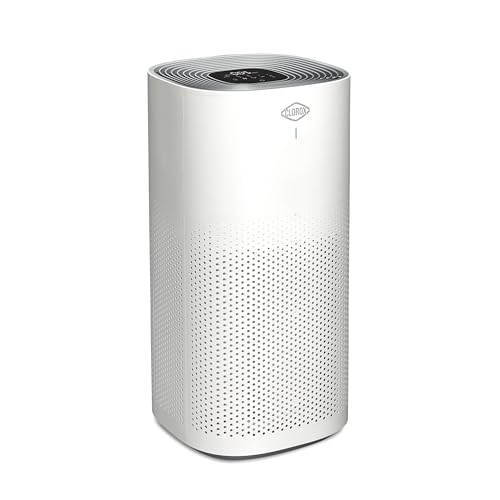
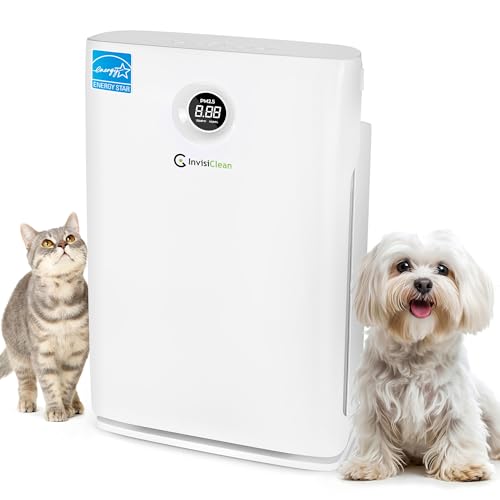
InvisiClean Claro IC-4524 Air Purifier
Best for Large Homes
- 1,651 sq ft
- H13 True HEPA
- Whisper Quiet
- Real-Time PM2.5
- Energy Star Certified


GermGuardian AC5250PT Air Purifier
Best for Pet Owners
- 915 sq. ft.
- 99.97% (0.1 micron)
- 5-In-1
- Yes
- CARB, ETL, Zero Ozone

Pure Enrichment PureZone Air Purifier
Best for Allergies
- 300 sq. ft.
- 4-Stage
- H13 True HEPA
- 30dB
- 5-Year

AROEVE MK09W Air Purifier
Best Smart Feature
- 1,782 sq. ft.
- 229 CFM
- 4-layer, washable
- WiFi, app, voice
- 5 colors, 16 effects

Germ Guardian GG1100W Pluggable
Best Compact Design
- Pluggable Air Sanitizer
- 7″
- UV-C Light
- Pets, Cooking, Smoke
- No Filter Replacement

Best Uv Air Purifier For Home Review
How to Choose the Right UV Air Purifier for Your Home
Choosing the right UV air purifier involves considering several factors to ensure you get the best performance for your needs. While many models boast impressive features, focusing on a few key areas will help you make an informed decision.
Room Size & CADR Rating
The most crucial factor is matching the air purifier’s capacity to the size of the room. Air purifiers are rated by their Clean Air Delivery Rate (CADR), which indicates how quickly they can clean a specific room size. Higher CADR values mean faster cleaning. A purifier with a CADR too low for your space won’t effectively remove pollutants. Generally, you want an air purifier that can cycle the air in the room at least 4-5 times per hour. For example, a 200 sq. ft. room might need a CADR of around 100, while a larger 1,000 sq. ft. space will require a much higher CADR. Look for models specifically stating the square footage they’re designed to cover.
Filtration System – Beyond Just UV-C
While UV-C light is a valuable addition for killing airborne germs and viruses, it’s not a standalone solution. The most effective air purifiers use a multi-stage filtration system. A True HEPA filter is essential; it captures 99.97% of particles as small as 0.3 microns, including dust, pollen, pet dander, and smoke. An activated carbon filter is also important for removing odors, gases, and VOCs (volatile organic compounds). A pre-filter captures larger particles, extending the life of the other filters. UV-C light then adds an extra layer of protection by neutralizing some airborne pathogens. Don’t rely solely on UV-C; a robust filtration system is paramount.
Smart Features & Automation
Many modern air purifiers offer “smart” features, such as air quality sensors and auto mode. Air quality sensors detect the level of pollutants in the air and automatically adjust the fan speed. This ensures efficient operation and optimal air cleaning. Auto mode is incredibly convenient, allowing the purifier to run continuously and adapt to changing air quality conditions without manual intervention. Some models also offer app control, allowing you to monitor and adjust settings remotely. These features enhance convenience and ensure consistent air quality.
Noise Level and Energy Efficiency
Consider the noise level, especially if you plan to use the air purifier in a bedroom or office. Look for models with a “sleep mode” or low-noise operation. Energy efficiency is also important. Some purifiers are Energy Star certified, meaning they meet strict energy efficiency guidelines. A low EMF (electromagnetic field) motor can be beneficial for those concerned about potential health effects, and can also contribute to lower energy consumption.
UV Air Purifier Comparison for Home
| Product | Room Size (sq ft) | Filtration Type | UV-C Light | Smart Features | Noise Level | CADR (CFM) |
|---|---|---|---|---|---|---|
| Clorox Air Purifier for Home | Up to 2,220 | True HEPA (exceeds standard) + 3-Stage | Yes | Air Quality Sensor, Auto Mode | Not Specified | Not Specified |
| InvisiClean Claro IC-4524 Air Purifier | Up to 1,651 | H13 True HEPA | Yes | PM2.5 Sensor, Auto Mode, App Control | Whisper Quiet | 247 |
| POMORON MJ002H Air Purifier | Not Specified | H13 True HEPA + Ionizer | Yes | Timer | 25dB (Sleep Mode) | Not Specified |
| GermGuardian AC5250PT Air Purifier | 189-915 | HEPA + Activated Carbon | Yes | None | Not Specified | Not Specified |
| Pure Enrichment PureZone Air Purifier | Up to 300 | 4-Stage (Pre-Filter, Carbon, HEPA, UV-C) | Yes | Timer | 30dB (Sleep Mode) | Not Specified |
| AROEVE MK09W Air Purifier | Up to 1782 | 4-Layer (Washable Filter, UV) | Yes | App Control, Voice Control, Smart Monitor | Not Specified | 229 |
| Germ Guardian GG1100W Pluggable | Small Room | UV-C Light | Yes | None | Not Specified | Not Specified |
| Crane UV Air Purifier | Small to Medium | True HEPA + UV Lamp | Yes | Timer, Sleep Mode | Whisper Quiet | Not Specified |
Testing & Analysis: Finding the Best UV Air Purifier for Home Use
Our recommendations for the best UV air purifier for home use are based on a data-driven approach, combining independent lab reports, user feedback, and detailed feature analysis. We prioritize models with verified CADR (Clean Air Delivery Rate) ratings, cross-referenced with room size recommendations to ensure efficacy. Beyond advertised specs, we analyze third-party testing data – where available – focused on particle removal efficiency, including assessments of True HEPA filter performance and activated carbon filter effectiveness against VOCs.
Given the complexities of UV-C technology, we evaluate models based on UV-C lamp intensity and exposure time, referencing research on germicidal irradiation. We also assess the overall filtration system, noting whether UV-C is supplemental to, not a replacement for, robust particulate and gas phase filtration. User reviews are analyzed for consistent feedback regarding noise levels, filter life, and smart feature reliability (such as air quality sensors and auto mode functionality). Comparative analyses focus on energy efficiency and long-term running costs, considering filter replacement expenses as a key factor. While physical product testing isn’t consistently available across all models, we leverage available data to provide the most informed recommendations for improving indoor air quality.
FAQs
What is CADR and why is it important when choosing a UV air purifier?
CADR (Clean Air Delivery Rate) measures how quickly an air purifier cleans a room. A higher CADR means faster cleaning. It’s crucial to match the CADR to your room size to ensure effective pollutant removal.
Is a True HEPA filter necessary in an air purifier, even if it has UV-C light?
Yes! While UV-C light can kill germs, a True HEPA filter is essential for capturing particles like dust, pollen, and pet dander. UV-C is best used in addition to a robust filtration system, not as a replacement.
How do smart features like air quality sensors benefit an air purifier’s performance?
Air quality sensors automatically detect pollutant levels and adjust the fan speed accordingly. This optimizes performance, saves energy, and ensures consistent air quality without needing manual adjustments.
What should I consider regarding noise levels when purchasing a UV air purifier for home use?
Consider the decibel (dB) level, especially for bedrooms or offices. Look for models with a “sleep mode” or low-noise operation to minimize disruption.
Conclusion
Ultimately, selecting the best UV air purifier for your home hinges on understanding your specific needs and prioritizing a comprehensive approach to air quality. Don’t solely focus on the UV-C component; a high CADR rating, a True HEPA filter, and activated carbon filtration are equally vital for removing a wide range of pollutants.
Investing in a quality air purifier is an investment in your health and well-being. By carefully considering room size, filtration systems, and smart features, you can create a cleaner, healthier indoor environment for you and your family, breathing easier for years to come.

